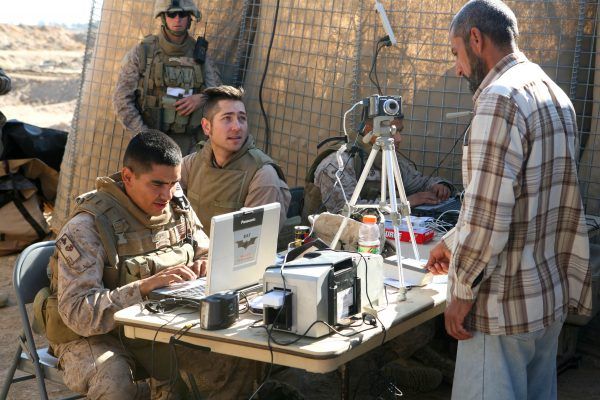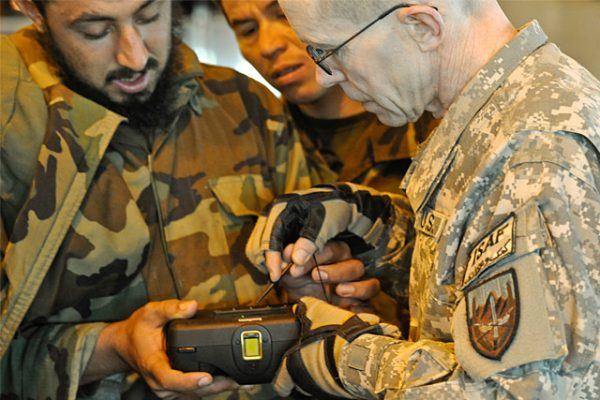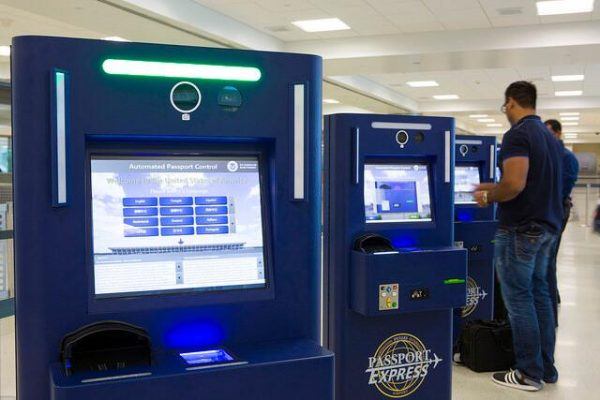The U.S. government did a fantastic job! Something you do not hear that often.
The U.S. government created an excellent biometric ID system: the Biometric Automated Toolset (BAT)/Handheld Interagency Identification Detection Equipment (HIIDE) and the BAT/Secure Electronic Enrollment Kit (SEEK) systems, successfully implementing both biometric ID card programs in places that really needed them. As you already know, those two places were not the states of New York and California—it was Iraq and Afghanistan. In the current complex political climate of the U.S., Americans might reject any attempt by the federal government to implement a biometric ID card system. No one would willingly give up the rights to use a picture of their own face by, say, making an application that shows an aged version of themselves. Although Americans in 2019 would never give up their eye/retinal scans, all ten fingerprints, and a picture that can be used with facial recognition software, such an ordeal was mandatory for all citizens in Iraq and Afghanistan in order to vote, receive U.S. foreign aid, and obtain employment for many Iraqi and Afghan governmental positions.

“Great Success” in Iraq
In 2007 the U.S. military began using the first biometric ID systems to help with stability and security operations in preparation for the 2010 Iraqi parliamentary elections. The proposed Iraqi ID system was modeled off the 2005 REAL ID Act, run by DHS and as recommended by the 9/11 commission. The new biometric system replaced the paper ID cards issued by Saddam Hussein’s government and had much better pictures. The 2010 Iraqi election was the ID system’s first test; it was considered a failure by many observers due to the lower-than-expected turnout. The biometric ID system was, of course, cited as a significant factor in the low voter numbers. Other factors might have been the tens of thousands of Iraqis killed by insurgents, or thousands of refugees created by five years of sectarian civil war. To be fair, the 2014 and 2018 parliamentary elections had even lower turn-out, but biometric scanners were not blamed. After several more years of civil war and the rise of the Islamic State/ISIS/ISIL, Iraqis’ decision to avoid polling stations seemed to be related to the polling stations ability to attract car bombings more than the hassle of waiting in line to vote. All those involved in creation of the Iraqi biometric ID card program concluded it was a success, allowing the Iraqi government to ID voters and citizens, while the country of Iraq is still a work in progress.

ID-ing Afghanistan
The Afghanistan biometric program was first implemented ten years ago right before the 2009 Afghanistan presidential election. According to the Afghan government, the 2009 election did not go as planned due to the failure of Afghan officials to operate the U.S. military-provided biometric systems properly. Counter to the PowerPoint plan, Afghans who have lived in a war-torn country for thirty years as of 2009 had trouble operating advanced biometric systems, retinal scanners, fingerprint readers, and accessing databases designed by engineers. Who knew? I personally operated the same biometric devices in 2011 and can tell you that it requires only 16 hours of class and practical application to use the equipment. So, I sympathize with the Afghan election officials.
An alternate explanation for the election chaos would have been the hundreds of insurgent attacks on polling stations, car bombings, assassinations of government officials, and corruption of the fledgling Afghan government formed five years earlier. Then again, it probably was the biometric devices. The biometric ID card and voter systems were finally fixed, and the voting process was much smoother, with voter turnout in 2014 and 2018 much higher compared to 2009. Correcting the ID system was much easier for the U.S. and Afghan governments to solve than the bombings, insurgent attacks, and assassinations of government officials by the Taliban and, in 2018, the new Islamic State faction. Thankfully, the U.S. continues to support this vital program to this very day and is preparing for the 2022 Afghan elections. Do not ask what the Afghan biometric ID card program’s total cost is because no one really knows, but my guess is more than 20 billion dollars.
India and Estonia Beat the U.S. in Biometrics with U.S.-Provided Technology
India, the world’s largest democracy, has almost all of its 1.3 billion citizens in a biometric ID system called “Aadhaar.” Started in 2009 and fully implemented by 2016, the program’s vision was to provide a citizen with authentication anytime and anywhere. Thankfully, many American technologies and companies helped India implement this system to stop illegal voting, welfare fraud, and corruption by government officials to ensure the $13.00 monthly welfare payments to poor Indians are not misused or stolen.
Estonia has the world’s most advanced biometric ID card system, with 98 percent of the 1.3 million citizens registered. Needless to say, but it is pretty easy to get 1.3 million citizens registered, especially when the U.S., NATO, and the EU provide all you need to accomplish the task.

Yes, We Can ID You!
Imagine how quickly the U.S. could complete a similar biometric ID card system —as exemplified above, operating in other territories— within its own borders. We have already developed the technology to make biometric ID cards on a massive scale and then given it away to other nations. The U.S. has successfully implemented two programs and does not have to deal with terrorist bombings, insurgent attacks, or the assassinations of government officials— character assassinations from the media aside. Scanning only 300 million people should be easy, and the 2005 REAL ID Act already requires biometric means of identification to be implemented for all state-issued driver’s licenses by October 1, 2020. I understand everyone’s privacy concerns with the U.S. government securing our personal data after the 2015 OPM hack, Facebook’s privacy breaches, and Google working more with the People’s Republic of China than the DoD to develop facial recognition software. Yet there would be one major advantage to a U.S. biometric ID card system.
A properly executed biometric ID system would allow the U.S. government to avoid asking any awkward questions during a census. Like “Are you a citizen of the United States of America?” With a biometric ID card system in place I am confident that at the very least we will finally be able to find D.B. Cooper, Carmen Sandiego, Jimmy Hoffa, and maybe even the elusive Waldo.
















